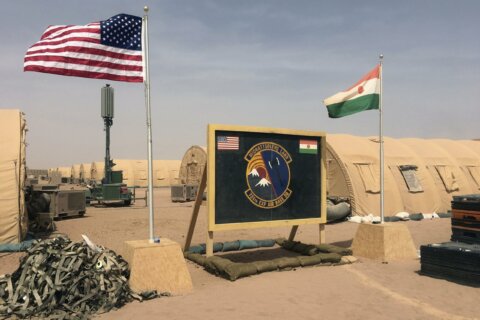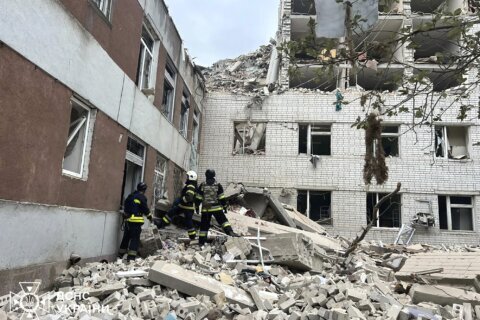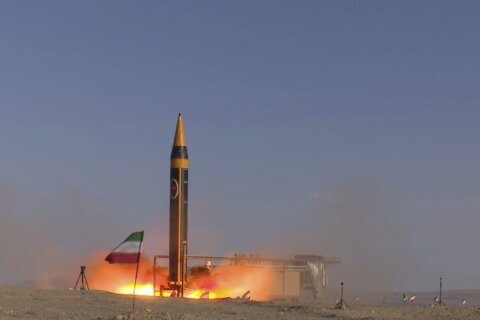WASHINGTON — In early February, a top Central Intelligence Agency official made it clear the shadowy external operations unit of the Islamic State of Iraq and the Levant (ISIL), was a top priority.
“We’re working day and night, to try as best we can to understand how this external operations network operates,” said David Cohen, CI A Deputy Director, in an exclusive interview with WTOP.
The loosely knit group of men was responsible for directing the Paris and Brussels terror attacks; three major attacks in Turkey, bringing down Russia’s Metrojet airline in Egypt, and dozens of other attacks across the Middle East, which have killed hundreds. It is also responsible for recruiting and inspiring individuals who conducted U.S.-based attacks including those in San Bernardino, Calif., Garland, Texas, and Orlando, Florida. It has claimed attacks in Ottawa, Canada and a string of others around the world including the deadly truck rampage in Nice, France in July.
The agency sought answers to several key questions which Cohen said included, “who’s involved, where they are, how they operate and how we can disrupt their operations.”
On Aug. 30, the U.S. military had enough of those answers to strike, in what was perhaps the most significant blow to the organization to date.
The leader of the mysterious unit was tracked down, followed and presumably killed.
“Today, coalition forces conducted a precision strike near Al Bab, Syria, targeting Abu Muhammad al-Adnani, one of ISIL’s most senior leaders. Al-Adnani, has served as principal architect of ISIL’s external operations and as ISIL’s chief spokesman,” said Pentagon Press Secretary Peter Cook.
Al-Adnani, the most recent second in command, famously extolled ISIL sympathizers on Sept. 22, 2014, to attack Americans and other Westerners, by whatever means available.
“Smash his head with a rock, or slaughter him with a knife, or run him over with your car, or throw him down from a high place, or choke him, or poison him,” said Adnani.
Cook said Adnani coordinated the movement of ISIL fighters, directly encouraged lone-wolf attacks on civilians and members of the military and actively recruited new ISIL members.
“Adnani’s death is a significant blow to ISIL and removes from the battlefield one of ISIL’s most senior figures who has been responsible for the leading the group’s efforts,” said a U.S. official. But the official acknowledged, “ISIL remains a resilient organization that commands significant manpower and resources. Time will tell how the loss of a key figure like Adnani will impact ISIL’s capabilities.”
He is one of seven top ISIL figures killed or captured since WTOP spoke to Cohen, suggesting the Pentagon and CIA have intensely pursued ISIL’s leadership.
Department of Defense spokesman Navy Captain Jeff Davis said in an interview, “we have worked to systematically degrade their leadership and we will continue to do so. These are things that have a very real effect.”
Cohen said in February, “part of our responsibility is to provide intelligence to our military counterparts so that they can, conduct operations, to push back ISIL.”
“In early February, coalition forces captured Sulayman Dawud al-Bakkar, aka Abu Dawud, ISIL’s emir of chemical and traditional weapons manufacturing, during an operation in Iraq.”
“On March 4, a U.S. airstrike near al Shaddadi, Syria, targeted senior ISIL leader Tarkhan Tayumurazovich Batirashvili, also known as Abu Umar al-Shishani, and “Omar the Chechen.” Batirashvili was a Syrian-based Georgian national who held numerous top military positions within ISIL, including minister of war.”
Haji Iman (Abu Ali al-Anbari) a well-known terrorist within ISIL’s ranks dating back to its earliest iteration as al-Qaida in Iraq was killed on March 25. He was believed to be ISIL’s Finance Minister and second in command at the time.
Shaker Wahib al-Fahdawi al-Dulaimi, according to the Pentagon, was killed on May 6 along with three others in a vehicle by a U.S. airstrike that targeted an ISIL gathering in the center of Rutba, Iraq. He was believed to be the group’s director of combat operations.
Basim Muhammad Ahmad Sultan al-Bajari, the terror group’s deputy minister of war, and Hatim Talib al-Hamduni, a military commander in Mosul, were killed in a June 25 strike in Mosul.
The killing of Adnani and the others, according to the U.S. official, “comes as ISIL has suffered a series of losses in territory and leadership.”
As that territory shrinks, the group’s top leader remains elusive.
Abu Bakr al-Baghdadi, the head of ISIL has made one public appearance since the brutal terror group burst on the scene in August 2014.
Since then, he’s been running.
“We think he may be in several different locations and we hear rumors on the battlefield of where he may be,” said Col. Christopher Garver of Operation, who spoke with WTOP, while spokesman for Operation Inherent Resolve, in late August.
While Baghdadi has reportedly been wounded several times, it appears as if, a part of the Pentagon’s plan is to take away all of his commanders and support, to perhaps isolate him.
“We continue to attack, really all the leaders below him, and we are trying to convince ISIL fighters that assuming the mantle of the guy ahead of you who just got killed is not a good career choice,” Garver said.
You can find more details on our Target USA podcast.








